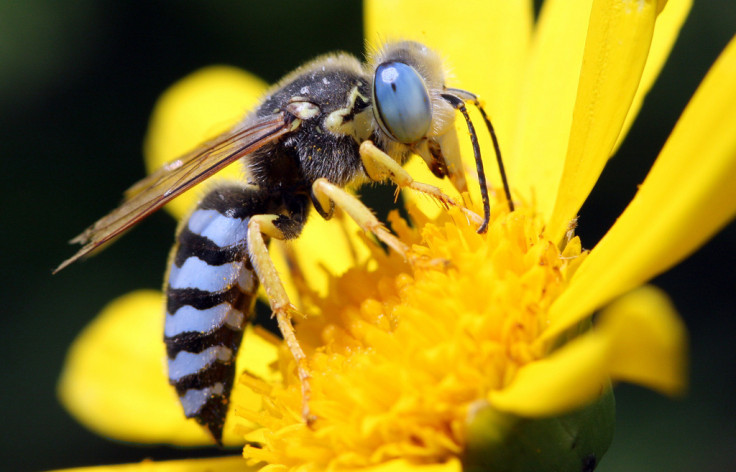Watch Australian blue-banded bee which pollinates by 'head-banging'

An Australian bee species has been found to have a unique way of obtaining pollen through a peciuliar head-banging method. Like the lead guitarist of a heavy metal band, the blue-banded bee vibrates its head to obtain maximum pollen from a flower.
The research, carried out by RMIT, the University of Adelaide, Harvard University and the University of California, found that the vibrations causes pollen to be released into the air. The bee has been recorded head-banging at 350 times per second. This is the first time the insect has been observed in action.
"We were absolutely surprised," said Sridhar Ravi, researcher from RMIT. "We were so buried in the science of it, we never thought about something like this. This is something totally new."
The study was aimed at comparing the pollination methods of the Australian blue-banded bee, and the North American bumblebee. The bumblebee is usually used outside North America as a means of commercial pollination.
However, by recording the audio frequency of the blue-banded bee's buzzing – with help from the video footage recorded - they were able to prove that the Australian bee can vibrate the flower at a higher frequency, spending less time per flower.
"Our earlier research has shown that blue-banded bees are effective pollinators of greenhouse tomatoes," said Katja Hogendoorn, from the University of Adelaide. "This new finding suggests that blue-banded bees could also be very efficient pollinators -- needing fewer bees per hectare."
The discovery could lead to improved speed of certain crops' pollination, and also yield better understanding of muscular stress. It also paves the way for the development of miniature flying robots.
© Copyright IBTimes 2025. All rights reserved.






















